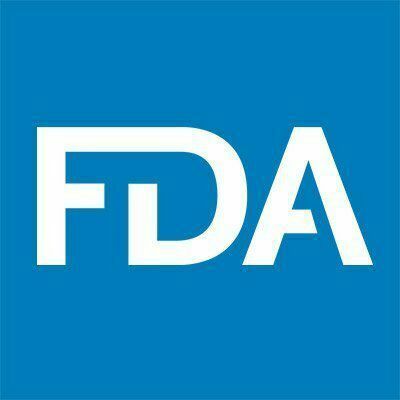FDA advances landmark policy changes to modernize mammography services and improve their quality

FDA advances landmark policy changes to modernize mammography services and improve their quality
Proposed rule would require breast density reporting, enhance the FDA’s ability to enforce mammography facilities’ compliance with standards
Today, the U.S. Food and Drug Administration announced important new steps to modernize breast cancer screening and help empower patients with more information when they are considering important decisions regarding their breast health care.
For the first time in more than 20 years of regulating mammography facilities, the agency is proposing amendments to key regulations that would help improve the quality of mammography services for millions of Americans. Today’s actions would expand the information mammography facilities must provide to patients and health care professionals, allowing for more informed medical decision-making. It would also modernize mammography quality standards and better position the FDA to enforce regulations that apply to the safety and quality of mammography services.
“Breast cancer is one of the most worrisome health concerns facing women. The FDA plays a unique and meaningful role in the delivery of quality mammography to help patients get accurate screening to identify breast health problems early, when they can be effectively addressed,” said FDA Commissioner Scott Gottlieb, M.D. “As part of our overall commitment to protecting the health of women, we’re proposing new policies to modernize our oversight of mammography services, by capitalizing on a number of important advances in mammography, like the increased use of 3-D digital screening tools and the need for more uniform breast density reporting. We’re committed to making sure patients have access to high quality mammography. Today’s proposed rule would help to ensure patients continue to benefit from advances in new tools and robust oversight of this field.”
According to the National Cancer Institute (NCI), approximately 12.4 percent of women will be diagnosed with breast cancer at some point during their lifetime. NCI estimates that, in 2018, more than 260,000 women were diagnosed with breast cancer and more than 40,920 women died of the disease. Aside from skin cancer, breast cancer is the most common cancer among women and the second leading cause of death. Additionally, mammography can be an important tool in detecting male breast cancers. According to the NCI, breast cancer may occur in men at any age, but usually occurs in men between 60-70 years of age.
The FDA’s proposal would amend regulations issued under the Mammography Quality Standards Act of 1992 (MQSA), which Congress passed to ensure quality mammography for early breast cancer detection. The MQSA authorizes FDA oversight over mammography facilities, including their accreditation, certification, annual inspections and enforcement of standards to help ensure mammography facilities provide quality care.
Among the proposed amendments to improve communication and medical decision making is the addition of breast density information to the mammography lay summary letter provided to patients and to the medical report provided to their referring health care professionals. Mammograms of dense breasts—breasts with a higher proportion of fibroglandular tissue compared to fatty tissue—can be difficult to interpret because the dense tissue can obscure signs of breast cancer and lower the sensitivity of the image. Dense breasts have also been identified as a risk factor for developing breast cancer. The FDA is proposing specific language that would explain how breast density can influence the accuracy of mammography and would recommend patients with dense breasts talk to their health care provider about high breast density and how it relates to breast cancer risk and their individual situation.
The proposed amendments also seek to enhance information provided to health care professionals by proposing to codify three additional categories for the assessments of mammograms, including adding an important category titled “known biopsy proven malignancy,” which would help identify for health care professionals those cases where cancer being mammographically evaluated for therapy are already known and identified. In addition, under the proposed regulations, both health care professionals and patients would receive in their reports and lay summary letters more detailed identifying information about the mammography facility to aid in post-exam communications.
“The FDA is committed to advancing efforts that improve the health of women. We believe the proposed rule would help empower patients and health care professionals by proposing improvements to the information facilities communicate to them, helping to facilitate the sometimes difficult conversations about potential risks for breast cancer,” said FDA Principal Deputy Commissioner Amy Abernethy, M.D., Ph.D. “Given that more than half of women over the age of 40 in the U.S. have dense breasts, helping to ensure patient access to information about the impact that breast density and other factors can have on the risk for developing breast cancer is an important part of a comprehensive breast health strategy. Today’s proposed amendments are part of the agency’s broader commitment to supporting new innovations and methods to prevent, detect and treat cancer. We are dedicated to working across the agency and with stakeholders to provide patients with tools and information to fight breast cancer effectively.”
The proposed amendments would also modernize mammography quality standards and better position FDA to enforce the MQSA regulations and take action when violations are found. Some of these proposed changes include:
Expressly stating that the FDA can directly notify patients and their health care professionals, should facilities be unwilling or unable to do so, that mammography at a facility did not meet quality standards and that reevaluation or repeat of the mammogram at another certified facility may be needed;
· Requiring that only digital accessory components specifically FDA approved or cleared for mammography be used, or that facilities use components that otherwise meet the requirements under the rule;
Strengthening record-keeping requirements to minimize information loss and improve access to and transfer of patient mammography records.
“Once finalized, these proposed amendments will enhance our oversight of mammography facilities, including in the key area of enforcement and patient communication,” said Jeff Shuren, M.D., J.D., director of the FDA’s Center for Devices and Radiological Health. “While the majority of certified mammography facilities are dedicated to providing high levels of patient care, today’s proposed regulations would enhance the FDA’s ability to communicate directly, if needed, with patients and their health care professionals in cases where facilities did not meet our quality standards and are not adequately communicating with patients about their facillities’ deficiencies. This is intended to help ensure important information that could affect decisions about patient care—such as the potential need for further evaluation or a repeat of a mammogram—is communicated as quickly as possible.”
The proposed rule is available online at www.regulations.gov for public comment until [insert date 90 days from publication].
For more information:
Federal Register Notice
Mammography Quality Standards Act and Program
The FDA, an agency within the U.S. Department of Health and Human Services, protects the public health by assuring the safety, effectiveness, and security of human and veterinary drugs, vaccines and other biological products for human use, and medical devices. The agency also is responsible for the safety and security of our nation’s food supply, cosmetics, dietary supplements, products that give off electronic radiation, and for regulating tobacco products.
Please support The Macon County Home Press by subscribing today!
You may also like:







